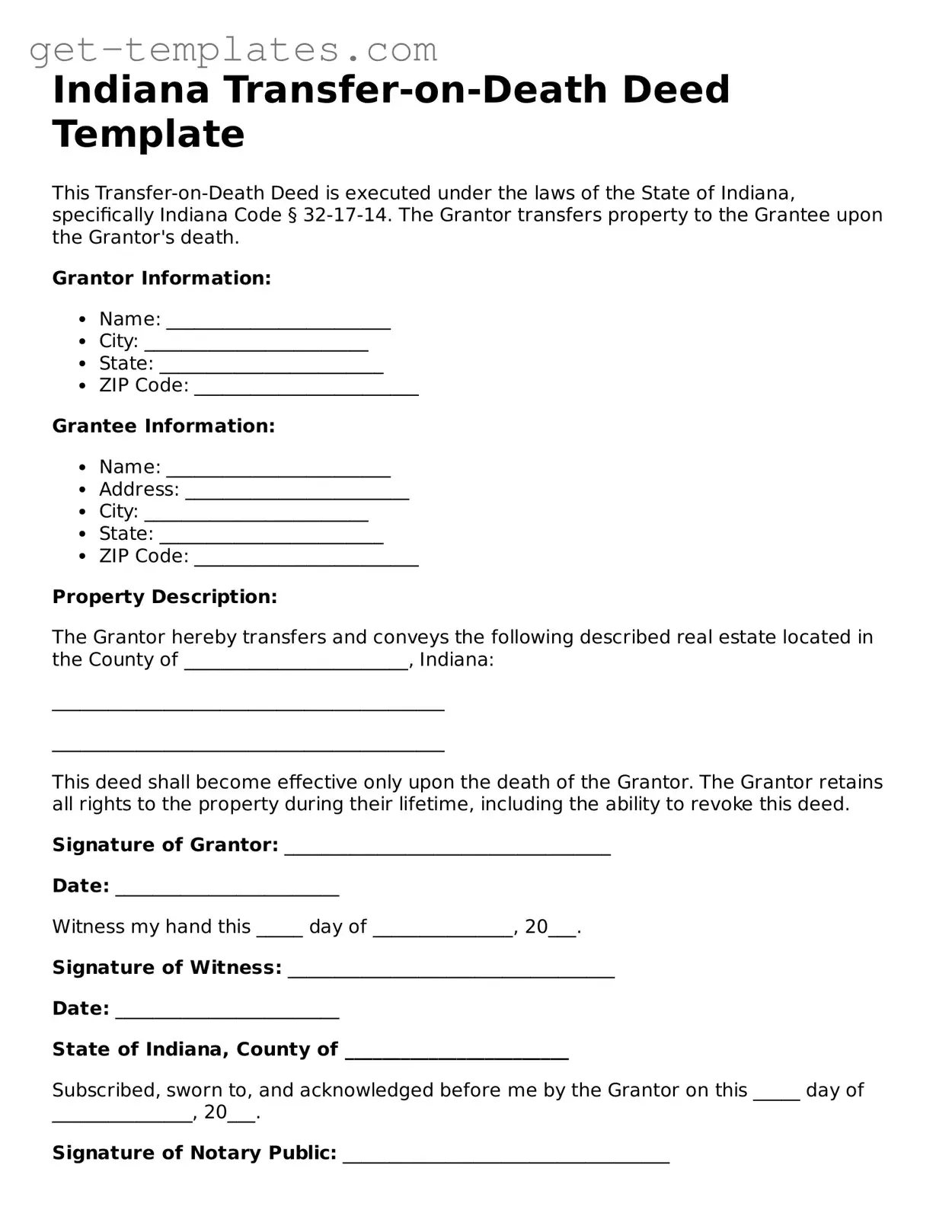Indiana Transfer-on-Death Deed Template
This Transfer-on-Death Deed is executed under the laws of the State of Indiana, specifically Indiana Code § 32-17-14. The Grantor transfers property to the Grantee upon the Grantor's death.
Grantor Information:
- Name: ________________________
- City: ________________________
- State: ________________________
- ZIP Code: ________________________
Grantee Information:
- Name: ________________________
- Address: ________________________
- City: ________________________
- State: ________________________
- ZIP Code: ________________________
Property Description:
The Grantor hereby transfers and conveys the following described real estate located in the County of ________________________, Indiana:
__________________________________________
__________________________________________
This deed shall become effective only upon the death of the Grantor. The Grantor retains all rights to the property during their lifetime, including the ability to revoke this deed.
Signature of Grantor: ___________________________________
Date: ________________________
Witness my hand this _____ day of _______________, 20___.
Signature of Witness: ___________________________________
Date: ________________________
State of Indiana, County of ________________________
Subscribed, sworn to, and acknowledged before me by the Grantor on this _____ day of _______________, 20___.
Signature of Notary Public: ___________________________________
Commission Number: ________________________
My Commission Expires: ________________________
